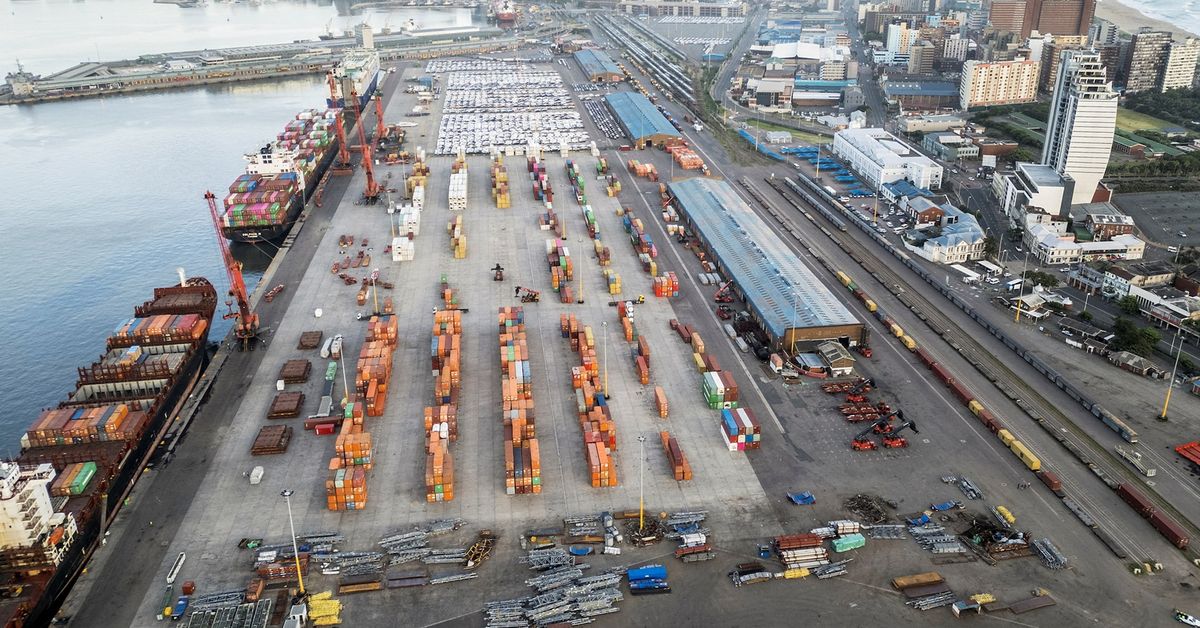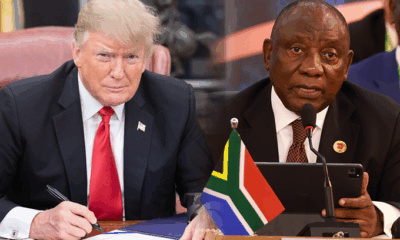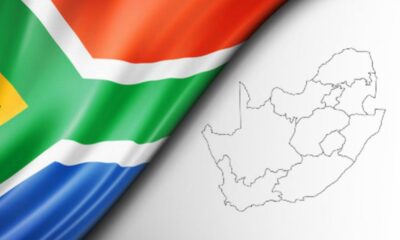Business
SA Faces 31% Tariff Shock as Trump Reshapes Global Trade

South Africa reels from Trump’s aggressive tariff push, as exporters fear a steep 31% cost hike and a ticking July deadline
South Africa’s exporters are holding their breath as a wave of new US tariffs sweeps across the globe and they’re right to be nervous. President Donald Trump’s sweeping overhaul of global trade in 2025 has just landed a potentially devastating blow to South African goods, with a 31% tariff rate hanging in the balance.
From agriculture and mining to the auto industry, sectors once cushioned by AGOA benefits are now vulnerable, and the clock is ticking.
Trump’s Global Reset: Trade on His Terms
For months now, Trump has been rolling out what insiders are calling his “reciprocal tariff doctrine”. A blanket 10% import tax is now the baseline for everyone, but that’s just the start. The real sting lies in the individual rates negotiated or not with each country.
South Africa, currently saddled with a 31% rate, may not even get a chance to plead its case. Trump’s team has signaled that not every partner will get a meeting before the July 9 deadline. For Pretoria, it’s a gut punch that could erase decades of preferential market access under the Africa Growth and Opportunity Act (AGOA).
It’s a dramatic pivot for a country that once enjoyed a strong bilateral trade relationship with Washington, especially in raw minerals, cars, and citrus fruits.
Exporters in Limbo, Investors Spooked
“Trade wars don’t just raise prices. They freeze decision-making,” said one Cape Town-based agribusiness executive. “We’ve got shipments planned to the US for August, and we don’t even know what duty we’ll be slapped with.”
And it’s not just South African businesses that are jittery. The International Monetary Fund has sounded the alarm too. Its April 2025 outlook bluntly described the world as “entering a new era” where traditional trade norms are unraveling—and new rules haven’t yet formed.
That means global markets are on edge. Investors are pulling back. Plans are stalled. Even the once-safe US dollar and Treasury bonds have become a little less shiny.
A Fork in the Road: Reform or Regret?
South Africa finds itself at a critical crossroads. While geography and its gateway role in African trade could offer a lifeline, that opportunity depends on serious reform fast.
The country’s ports are clogged. Trains break down. Crime and corruption plague border posts. And subsidies for underperforming industries keep mounting. These systemic issues are now more than domestic problems; they’re barriers to global competitiveness.
If the Government of National Unity doesn’t act decisively to fix trade infrastructure and streamline policy, South Africa risks missing a once-in-a-generation chance to reposition itself as a global player in a rebalanced trade environment.
From AGOA Darling to Tariff Target
AGOA, the US trade preference programme for African countries, once gave South Africa a golden ticket into American markets. In 2023, South African exports to the US topped R170 billion, largely tariff-free. But that era may be coming to a dramatic end.
With AGOA under review and Trump’s pivot toward bilateralism, multilateral preference schemes are increasingly seen as outdated relics. Instead, Trump wants clear, transactional deals and any country not onboard is likely to pay a premium.
South African officials are scrambling to keep the dialogue open. But with US negotiators focused elsewhere, hopes for relief before July 9 are fading.
Social and Political Reactions: Frustration Brews
On South African social media, hashtags like #TariffTrap and #TrumpTradeBlow have started trending. Many are calling for stronger government lobbying efforts, while others blame the country’s chronic logistical failings and lack of trade foresight.
“Maybe if we fixed Transnet years ago, we wouldn’t be in this mess,” one user posted on X (formerly Twitter), referring to the long-troubled state logistics company.
Political parties are beginning to weigh in too, accusing the GNU of being reactive rather than proactive. Economists warn that if key export industries shrink under the pressure, job losses could ripple across already fragile rural economies.
What Happens After July 9?
The big unknown is whether the US will make any exceptions or if this is the new normal. Trump’s administration has shown some willingness to tweak tariffs based on strategic partnerships, but analysts caution that it’s not guaranteed.
In the meantime, global shipping firms are already adjusting routes and pricing models to avoid overly politicised trade paths. That, too, will have knock-on effects for South African exporters who rely on stable, predictable access to ports and buyers.
If anything is clear, it’s that the rules of the game are being rewritten. And right now, South Africa’s name is not on the guest list.
South Africa is now in the global trade spotlight, but not in a good way. The 31% tariff rate isn’t just a penalty. It’s a signal. Without urgent investment in modern trade infrastructure, reform of inefficient systems, and agile foreign policy engagement, the country could slide further behind in a shifting global order.
The question isn’t whether South Africa can survive this new trade era it’s whether it can adapt in time to benefit from it.
{Source: Cape Business News}
Follow Joburg ETC on Facebook, Twitter , TikTok and Instagram
For more News in Johannesburg, visit joburgetc.com



























